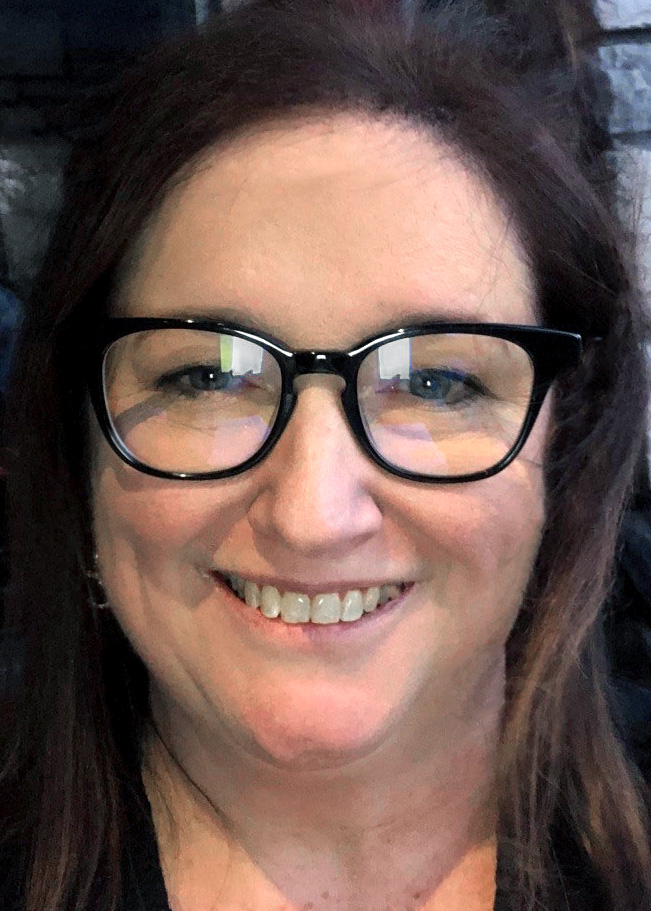

 In our physical world, census information is used to inform the planning processes behind the provision of infrastructure, such as schools, hospitals, housing, and similar. It can be used to assess the impact of natural disasters or to understand a society's needs in terms of food and energy security. Demographic data is also used to inform investment and business decisions. You'd think that the Internet itself would be awash with similar information. more
In our physical world, census information is used to inform the planning processes behind the provision of infrastructure, such as schools, hospitals, housing, and similar. It can be used to assess the impact of natural disasters or to understand a society's needs in terms of food and energy security. Demographic data is also used to inform investment and business decisions. You'd think that the Internet itself would be awash with similar information. more
 In CSC's recent insight paper, we address the trend that many business leaders today don't realize the extent to which their modern enterprise -- and its millions of digital assets -- rely on. It's a vast domain ecosystem that needs to be protected from online threats. Often, to better understand this need for domain security, we need to understand how critical and interconnected domains are within a business. more
In CSC's recent insight paper, we address the trend that many business leaders today don't realize the extent to which their modern enterprise -- and its millions of digital assets -- rely on. It's a vast domain ecosystem that needs to be protected from online threats. Often, to better understand this need for domain security, we need to understand how critical and interconnected domains are within a business. more
 As the saying goes, elections have consequences. The consequences are underscored in the recent U.S. Presidential election and the potential impact on the Internet, infrastructure and cybersecurity. In the context of the CircleID global community, it seems worth asking where things are headed? It does beg for an analysis of what is actually proposed in Presidential Transition Project 2025 related to things internet and cybersecurity. more
As the saying goes, elections have consequences. The consequences are underscored in the recent U.S. Presidential election and the potential impact on the Internet, infrastructure and cybersecurity. In the context of the CircleID global community, it seems worth asking where things are headed? It does beg for an analysis of what is actually proposed in Presidential Transition Project 2025 related to things internet and cybersecurity. more
 The reports of multistakeholder Internet governance's demise are greatly exaggerated. This article explores the dual nature of multistakeholderism: its evolving, sometimes contentious practice as the "First Body," and its enduring principle of actor plurality as the "Second Body." Despite criticism and challenges, multistakeholderism remains crucial for a resilient, non-state-led Internet, underscoring the need to adapt and uphold its foundational pluralism. more
The reports of multistakeholder Internet governance's demise are greatly exaggerated. This article explores the dual nature of multistakeholderism: its evolving, sometimes contentious practice as the "First Body," and its enduring principle of actor plurality as the "Second Body." Despite criticism and challenges, multistakeholderism remains crucial for a resilient, non-state-led Internet, underscoring the need to adapt and uphold its foundational pluralism. more
 Thanks to wide adoption of the Infrastructure as Code (IaC) approach, programmatic provisioning of cloud resources is slowly transforming almost every aspect of computing, with administration of web apps having emerged as a key use case. With IaC, it's possible to streamline resource management tasks, shorten time-to-market, control costs, and scale at will. The adoption of continuous integration and continuous delivery (CICD) pipelines is already making a huge difference in web app deployment and cloud resource management. more
Thanks to wide adoption of the Infrastructure as Code (IaC) approach, programmatic provisioning of cloud resources is slowly transforming almost every aspect of computing, with administration of web apps having emerged as a key use case. With IaC, it's possible to streamline resource management tasks, shorten time-to-market, control costs, and scale at will. The adoption of continuous integration and continuous delivery (CICD) pipelines is already making a huge difference in web app deployment and cloud resource management. more
 Do you (or someone you know) believe that people everywhere should have access to affordable, reliable, and resilient Internet connectivity? Are you passionate about ensuring that people everywhere have an Internet experience that is safe, secure, and protects them online? Do you have leadership experience in business, government, philanthropy, and/or the nonprofit sector? more
Do you (or someone you know) believe that people everywhere should have access to affordable, reliable, and resilient Internet connectivity? Are you passionate about ensuring that people everywhere have an Internet experience that is safe, secure, and protects them online? Do you have leadership experience in business, government, philanthropy, and/or the nonprofit sector? more
 Abusive behavior that leverages the domain name system (DNS) continues to be a problem, with a reach that has been widely and credibly documented. There is little doubt that bad actors continue to use the DNS for nefarious and costly purposes. While the amendments made in 2024 to ICANN's Registry Agreement (RA) and Registrar Accreditation Agreement (RAA) were a step in the right direction, more advanced tools are needed to bring abuse rates down. more
Abusive behavior that leverages the domain name system (DNS) continues to be a problem, with a reach that has been widely and credibly documented. There is little doubt that bad actors continue to use the DNS for nefarious and costly purposes. While the amendments made in 2024 to ICANN's Registry Agreement (RA) and Registrar Accreditation Agreement (RAA) were a step in the right direction, more advanced tools are needed to bring abuse rates down. more
 As with any high-stakes event, elections have become a prime target for cybercriminals seeking to exploit public trust through impersonation, misinformation, and scams. CSC's comprehensive research about the 2024 U.S. Election reveals the alarming role of dormant domains, which have the potential to be exploited for launching cyber attacks against political campaigns, organizations, and constituents. more
As with any high-stakes event, elections have become a prime target for cybercriminals seeking to exploit public trust through impersonation, misinformation, and scams. CSC's comprehensive research about the 2024 U.S. Election reveals the alarming role of dormant domains, which have the potential to be exploited for launching cyber attacks against political campaigns, organizations, and constituents. more
 As the world races towards digital transformation, the technologies we choose will have a lasting impact on our planet. Blockchain, NFTs, and other crypto assets have garnered much attention for their ability to securely and immutably store records. However, the environmental cost of maintaining these technologies is often overlooked. The energy consumption required to sustain blockchains, particularly those using Proof of Work (PoW), is enormous... more
As the world races towards digital transformation, the technologies we choose will have a lasting impact on our planet. Blockchain, NFTs, and other crypto assets have garnered much attention for their ability to securely and immutably store records. However, the environmental cost of maintaining these technologies is often overlooked. The energy consumption required to sustain blockchains, particularly those using Proof of Work (PoW), is enormous... more
 The European Union (EU) has set a high bar by tackling domain name system (DNS) abuse head on via government regulation and seems to have successfully resisted attempts to water down DNS stewardship obligations. Recent guidance from a key European Commission cooperation group (the NIS Cooperation Group) handling sections of the Network and Information Security Directive (NIS2) intends for a robust implementation of Article 28, which will go a long way toward helping to mitigate some of the longstanding problems that persist in the DNS. more
The European Union (EU) has set a high bar by tackling domain name system (DNS) abuse head on via government regulation and seems to have successfully resisted attempts to water down DNS stewardship obligations. Recent guidance from a key European Commission cooperation group (the NIS Cooperation Group) handling sections of the Network and Information Security Directive (NIS2) intends for a robust implementation of Article 28, which will go a long way toward helping to mitigate some of the longstanding problems that persist in the DNS. more
 As the United Nations' Global Digital Compact (GDC) approaches its expected adoption, a growing chorus of critics warns that it threatens the very foundations of multistakeholderism in Internet governance. While the GDC aims to foster global cooperation and advance shared objectives for digital transformation, it not only centralizes power within the UN but also sidelines the Internet Governance Forum (IGF) - a platform that has, for years, been instrumental in amplifying diverse voices, especially from marginalized communities and the private sector. more
As the United Nations' Global Digital Compact (GDC) approaches its expected adoption, a growing chorus of critics warns that it threatens the very foundations of multistakeholderism in Internet governance. While the GDC aims to foster global cooperation and advance shared objectives for digital transformation, it not only centralizes power within the UN but also sidelines the Internet Governance Forum (IGF) - a platform that has, for years, been instrumental in amplifying diverse voices, especially from marginalized communities and the private sector. more
 On October 20th, ICANN and Verisign renewed the agreement under which Verisign will continue to act as Root Zone Maintainer for the Domain Name System (DNS) for another 8-year term. The Root Zone sits atop the hierarchical architecture of the DNS and is essential to virtually all internet navigation, acting as the dynamic, cryptographically secure, global directory of all top-level domains that exist in the DNS. more
On October 20th, ICANN and Verisign renewed the agreement under which Verisign will continue to act as Root Zone Maintainer for the Domain Name System (DNS) for another 8-year term. The Root Zone sits atop the hierarchical architecture of the DNS and is essential to virtually all internet navigation, acting as the dynamic, cryptographically secure, global directory of all top-level domains that exist in the DNS. more
 There was a burst of recent press about cellular service provided from satellites. This was probably prompted by the two recent hurricanes that have disabled terrestrial cellular and broadband networks in the southeast. I've seen speculation and discussion on Reddit and other forums where people have been wondering if satellite is the future of cell service and if the ubiquitous giant cell towers will eventually become obsolete. more
There was a burst of recent press about cellular service provided from satellites. This was probably prompted by the two recent hurricanes that have disabled terrestrial cellular and broadband networks in the southeast. I've seen speculation and discussion on Reddit and other forums where people have been wondering if satellite is the future of cell service and if the ubiquitous giant cell towers will eventually become obsolete. more
 In the final three articles in my series looking at algorithms for measuring the similarity of marks, I extend the ideas to provide a more sophisticated and adaptable framework. Article 4 introduces a similarity score based on color distance in RGB space, offering a quantitative approach to trademark similarity. Article 5 refines word mark similarity by using the International Phonetic Alphabet to improve phonetic analysis. The final article presents a method for sorting colors by dominant shade, aiding in trademark review and potential guidelines for color mark protection. more
In the final three articles in my series looking at algorithms for measuring the similarity of marks, I extend the ideas to provide a more sophisticated and adaptable framework. Article 4 introduces a similarity score based on color distance in RGB space, offering a quantitative approach to trademark similarity. Article 5 refines word mark similarity by using the International Phonetic Alphabet to improve phonetic analysis. The final article presents a method for sorting colors by dominant shade, aiding in trademark review and potential guidelines for color mark protection. more
 On October 10, all ISPs in the United States were supposed to have implemented and posted broadband labels. The labels were required as part of the Infrastructure Investment and Jobs Act. Large ISPs had to post labels six months ago, and now the requirement is for all ISPs. I looked at the ISPs in a few counties I'm very familiar with, and I found a few ISPs in each county that have not posted labels that I can find on their website. more
On October 10, all ISPs in the United States were supposed to have implemented and posted broadband labels. The labels were required as part of the Infrastructure Investment and Jobs Act. Large ISPs had to post labels six months ago, and now the requirement is for all ISPs. I looked at the ISPs in a few counties I'm very familiar with, and I found a few ISPs in each county that have not posted labels that I can find on their website. more
Sponsored byIPv4.Global

Sponsored byRadix

Sponsored byVerisign

Sponsored byVerisign

Sponsored byWhoisXML API

Sponsored byCSC

Sponsored byDNIB.com
